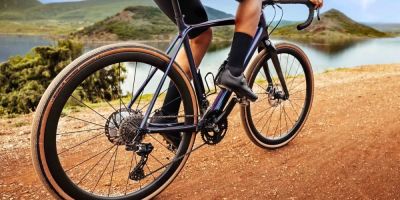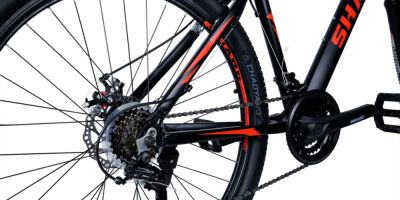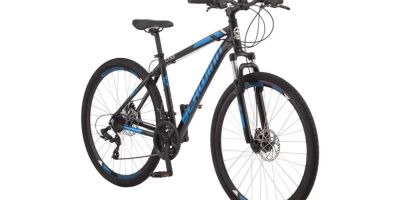1. Understanding Slack Head Angles in Mountain Bikes
As an avid mountain biker, I’ve always been fascinated by the subtle yet significant differences that can transform the riding experience. One of the most crucial factors in a mountain bike’s handling is the head angle. For years, I had heard the term "slack head angle" thrown around in discussions about modern mountain bike geometry, but it wasn’t until I rode a bike with a slack head angle myself that I truly understood its impact. In this article, I’ll share my experience with slack head angles, explain what they are, and explore how they affect the overall performance of mountain bikes.
A slack head angle refers to the angle of the head tube in relation to the ground, and it is one of the key elements that influences a bike’s stability, handling, and control, especially on rough and technical trails. While the traditional mountain bike geometry emphasized steeper head angles for quick steering and responsiveness, bikes with slacker head angles are designed for a completely different purpose—offering greater stability and control in downhill and aggressive riding situations. For riders like me who enjoy tackling steep descents and rough terrain, understanding the advantages of a slack head angle has been a game changer. Let’s dive into how this geometry can impact your ride and why you might want to consider it for your next bike purchase.

Mike's Bikes of Berkeley
1824 University Ave, Berkeley, CA 94703, USA
2. The Science Behind Slack Head Angles
The slack head angle is primarily measured in degrees, with modern mountain bikes typically featuring angles between 63 and 67 degrees. A "slack" angle is considered anything less than the standard 70-degree head angle commonly found on older bikes. The slacker the angle, the more stable and predictable the bike feels, particularly when riding at high speeds downhill. This stability comes at the expense of agility and quick handling, which is why slack head angles are often favored for aggressive, gravity-focused riding rather than technical climbing or tight trail navigation.

Mike's Bikes of Berkeley
1824 University Ave, Berkeley, CA 94703, USA
2.1 How Slack Head Angles Affect Handling
When I first switched to a bike with a slack head angle, I noticed a major difference in how the bike felt when descending steep, rocky trails. The slack angle made the bike feel more stable, and it helped absorb the bumps and vibrations from the trail. In contrast, a steeper head angle would have made the bike feel twitchy and less predictable at high speeds. This is because the slack angle increases the distance between the front wheel and the handlebars, creating a longer wheelbase. The longer wheelbase adds stability, reducing the likelihood of the front wheel "flipping" out when landing drops or navigating rough patches of trail.
2.2 The Impact on Geometry and Ride Comfort
Another noticeable benefit of a slack head angle is the change in overall bike geometry. A slacker head angle shifts the rider’s position slightly, allowing for a more comfortable and controlled riding posture, particularly when descending steep hills. As I’ve found, it also makes cornering at high speeds more forgiving. The bike is less likely to jackknife or oversteer, providing a more predictable and smooth cornering experience. For riders who focus on downhill racing or enduro events, this stability becomes a huge asset, allowing for better control over the bike’s behavior in challenging conditions.
3. Slack Head Angles and Downhill Performance
While I’ve always loved mountain biking in general, I’ve become particularly fond of downhill riding after spending some time on a bike with a slack head angle. It’s not just about speed; it’s about the confidence you get when bombing down a trail that would otherwise feel unnervingly unstable. A slacker head angle gives me the sense that my bike is "locked in" to the trail, offering more predictability when handling jumps, rocks, and steep drops. This is why I’m a firm believer in slack head angles for riders who spend a significant amount of time descending.
3.1 Better Control on Steep Terrain
One of the most striking advantages of a slack head angle is its performance on steep terrain. When I’m tackling downhill trails, especially those with sharp drops or steep inclines, I’ve noticed that the bike stays composed and confident, even in loose gravel or muddy conditions. The slack angle prevents the front wheel from diving into the ground too quickly, providing more stability and giving me better control over the bike. This is especially helpful when riding through rough rock gardens or navigating fast, technical sections that require precise control.
3.2 Reduced Risk of Oversteering
A slack head angle significantly reduces the risk of oversteering, which is a common issue with bikes that have steeper head angles. Oversteering occurs when the front wheel turns too quickly, causing the bike to lose traction or momentum. In my experience, bikes with a slack head angle provide a much smoother, more forgiving handling experience, especially when navigating high-speed downhill sections. The reduced tendency to oversteer allows me to ride with greater confidence and focus on tackling the trail rather than worrying about the bike's stability.
4. Slack Head Angles for Enduro and All-Mountain Biking
While slack head angles are typically associated with downhill riding, I’ve also found that they offer great benefits for enduro and all-mountain biking. Enduro races, for example, often feature a combination of uphill climbs and steep downhill sections. In these types of events, having a bike with a slack head angle can be an advantage during the downhill portions, where stability and control are paramount. For riders like me who enjoy both climbing and descending, a slacker head angle offers the perfect balance of performance in a variety of conditions.
4.1 The Trade-Off: Climbing Challenges
One thing to keep in mind when considering a mountain bike with a slack head angle is that it can impact your ability to climb efficiently. Bikes with steeper head angles generally feel more responsive and nimble when navigating technical climbs, allowing for better traction and handling on steep, rocky terrain. In contrast, the slack head angle makes climbing slightly more challenging, as the bike’s front end tends to lift more easily, especially when pushing hard on steep ascents. However, I’ve found that with a bit of practice, you can still manage these challenges and enjoy the stability benefits of a slack head angle during descents.
4.2 Ideal for Technical Trail Riding
For riders who focus on technical trail riding, a slack head angle can be a game-changer. When I hit trails that require precise handling, such as navigating tight corners, drops, or rocky sections, the slack head angle gives me more control over the bike's movements. It allows me to ride with more confidence in sections where balance and smooth handling are essential. Whether it’s a steep, rocky descent or a series of obstacles in an all-mountain trail, the bike's slack head angle makes all the difference in ensuring that I stay in control and ride with ease.
5. Conclusion: Is a Slack Head Angle Right for You?
If you’re a rider who enjoys steep descents, technical trails, and downhill races, then a mountain bike with a slack head angle is definitely something to consider. In my experience, the increased stability, control, and confidence that a slack head angle offers on rough terrain is invaluable. However, if you prioritize climbing performance or quick maneuverability on flatter trails, you might find that a steeper head angle suits your riding style better. Ultimately, it comes down to what you’re looking for in a bike and the type of riding you do most often.
For anyone interested in learning more about bike geometry or finding the perfect mountain bike, I highly recommend checking out Healthy Cycling for expert advice and recommendations.










